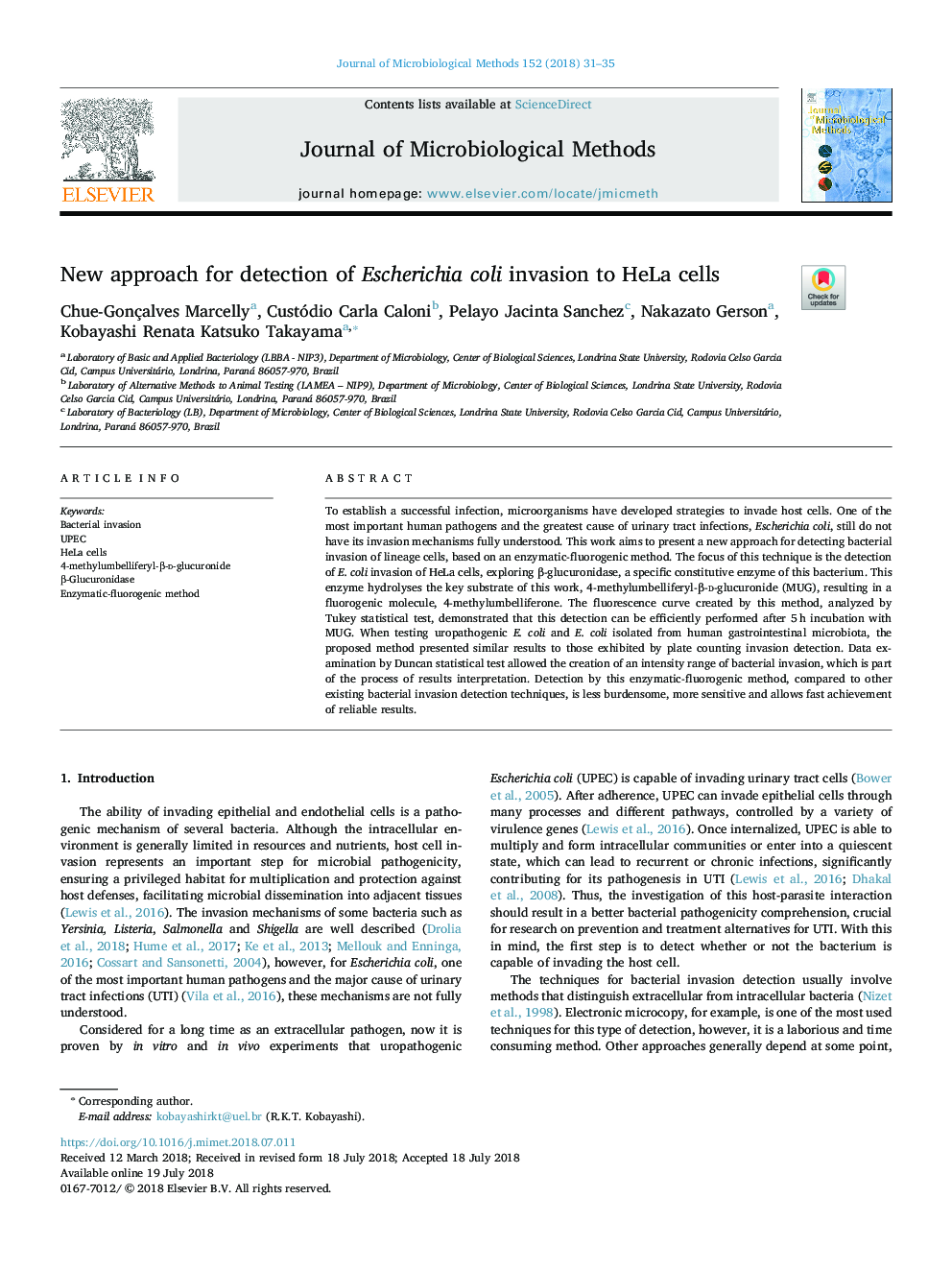| Article ID | Journal | Published Year | Pages | File Type |
|---|---|---|---|---|
| 8420252 | Journal of Microbiological Methods | 2018 | 5 Pages |
Abstract
To establish a successful infection, microorganisms have developed strategies to invade host cells. One of the most important human pathogens and the greatest cause of urinary tract infections, Escherichia coli, still do not have its invasion mechanisms fully understood. This work aims to present a new approach for detecting bacterial invasion of lineage cells, based on an enzymatic-fluorogenic method. The focus of this technique is the detection of E. coli invasion of HeLa cells, exploring β-glucuronidase, a specific constitutive enzyme of this bacterium. This enzyme hydrolyses the key substrate of this work, 4-methylumbelliferyl-β-d-glucuronide (MUG), resulting in a fluorogenic molecule, 4-methylumbelliferone. The fluorescence curve created by this method, analyzed by Tukey statistical test, demonstrated that this detection can be efficiently performed after 5â¯h incubation with MUG. When testing uropathogenic E. coli and E. coli isolated from human gastrointestinal microbiota, the proposed method presented similar results to those exhibited by plate counting invasion detection. Data examination by Duncan statistical test allowed the creation of an intensity range of bacterial invasion, which is part of the process of results interpretation. Detection by this enzymatic-fluorogenic method, compared to other existing bacterial invasion detection techniques, is less burdensome, more sensitive and allows fast achievement of reliable results.
Related Topics
Life Sciences
Biochemistry, Genetics and Molecular Biology
Biotechnology
Authors
Chue-Gonçalves Marcelly, Custódio Carla Caloni, Pelayo Jacinta Sanchez, Nakazato Gerson, Kobayashi Renata Katsuko Takayama,
